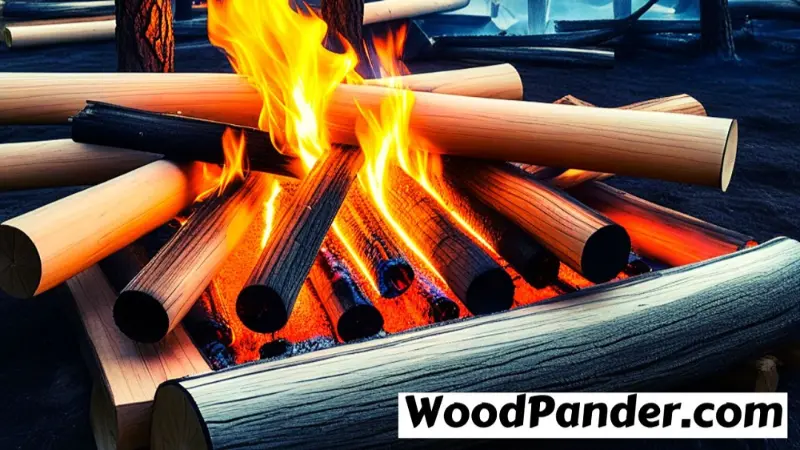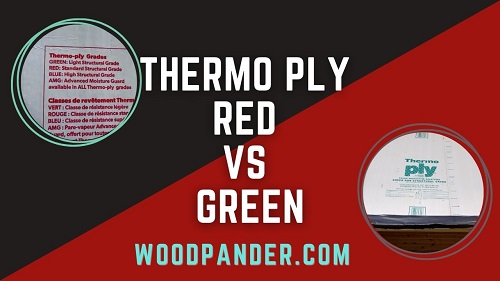Wood is a commonly used material in construction projects, but it is also highly susceptible to fire damage. Fortunately, there are numerous fire resistant wood treatment methods that can be applied to enhance the fire resistance of wood and reduce the risk of property damage or personal injury.
In this section, we will explore how to make wood fire resistant by discussing various fire resistant wood treatment methods. Whether you’re a homeowner or a construction professional, these simple steps can help you achieve greater fire resistance for wood materials.
Understanding Fire Resistance and Wood
When it comes to protecting wooden structures from fire, there are several wood fireproofing techniques that can be used to enhance the natural resistance of wood to fire.
These techniques are designed to create a barrier of protection around the wood, preventing it from catching fire or slowing down the spread of flames in case of fire.
Enhancing Wood’s Resistance to Fire
One of the most effective ways to enhance wood’s resistance to fire is by applying fire retardant coatings or solutions to the surface.
These solutions work by chemically altering the surface of the wood, making it less prone to catching fire. They also form a protective barrier that can slow down the spread of flames in case of fire.
Another technique for enhancing wood’s fire resistance is by impregnating it with fire-resistant chemicals. This process involves soaking the wood in a solution that contains fire retardant chemicals, which penetrate deep into the wood fibers to create a fire-resistant barrier.
The impregnated wood can then be used for construction, furniture, and other wooden structures, providing enhanced fire protection.
Wood Fireproofing Techniques
Wood fireproofing techniques can also include the use of fire-resistant materials, such as fire-rated drywall or insulation.
These materials are designed to resist flames and heat and can be used in conjunction with wooden structures to provide added fire protection.
Additionally, installing fire alarms and sprinkler systems can provide an added layer of protection, alerting occupants to the presence of fire and helping to extinguish flames early.
“One of the most effective ways to enhance wood’s resistance to fire is by applying fire retardant coatings or solutions to the surface.”

DIY Fire Retardant for Wood
When it comes to fireproofing solutions for wooden structures, a DIY fire retardant for wood can be a cost-effective and efficient way to enhance the fire resistance of wood.
In this section, we will provide step-by-step instructions on creating a DIY fire retardant for wood, along with other fireproofing solutions that can be applied to wooden structures.
DIY Fire Retardant for Wood
A DIY fire retardant for wood can be easily made using common household items. Here are the steps:
- Mix borax powder and boric acid in a 1:1 ratio.
- Add hot water and stir until the powders dissolve completely.
- Add half a cup of ammonium phosphate to the solution and mix well.
- Allow the solution to cool before using it to coat the wood.
- Apply two coats of the solution, allowing each coat to dry completely before applying the next one.
This DIY fire retardant for wood can be effective in adding an extra layer of protection to wooden structures. However, it’s important to note that it may not be as effective as professional wood fire protection methods.
Fireproofing Solutions for Wooden Structures
Aside from a DIY fire retardant for wood, other fireproofing solutions can be applied to wooden structures for added protection. These include:
- Applying fire-resistant coatings and sealers to the wood surface.
- Using fire-resistant panels or drywall to cover wooden walls and ceilings.
- Installing fire-resistant insulation materials.
- Building with non-combustible materials such as bricks and concrete.
These fireproofing solutions can significantly enhance the fire resistance of wooden structures and reduce the risk of fire damage.
Professional Wood Fire Protection Methods
When it comes to protecting wood from fire, professionals use specific methods and products to ensure maximum fire resistance.
In this section, we will explore the best practices for wood fire protection and highlight the different types of fire-resistant coatings available for wood.
Best Practices for Wood Fire Protection
When it comes to protecting wood from fire, the best practices include:
- Choosing fire-resistant materials for wood
- Properly applying fire-resistant coatings
- Regularly inspecting and maintaining the wood
- Keeping wood away from sources of heat and open flames
By following these practices, you can significantly enhance the fire resistance of wood and reduce the risk of fire damage.
Fire-Resistant Coatings for Wood
Fire-resistant coatings can be applied to wood to enhance its fire resistance. Here are some of the most commonly used fire-resistant coatings:
| Coating Type | Benefits |
|---|---|
| Intumescent Coatings | Expand when exposed to heat, forming a protective barrier and insulating the wood from the fire |
| Cementitious Coatings | Provide excellent thermal insulation and are highly resistant to fire |
| Epoxy Coatings | Offer a high level of fire protection and also protect against moisture and other environmental factors |
It’s important to follow the manufacturer’s instructions for applying these coatings and to maintain them properly for maximum effectiveness.
Using fire-resistant coatings in combination with other fire protection methods can provide a high level of protection for wooden structures and prevent catastrophic fire damage.
Treating Wood to Prevent Fire Damage
When it comes to preventing fire damage to wooden structures, treating wood is a proactive measure that property owners can take. By enhancing the natural fire resistance of wood, you can significantly reduce the risk of fire damage.
In this section, we will explore the appropriate treatments and fire resistant wood products available for treating wood to prevent fire damage.
Appropriate Treatments for Fire Resistant Wood
There are several fire resistant treatments available to protect wood from fire damage. One of the most common treatments is pressure impregnation with fire-retardant chemicals.
This treatment involves forcing chemicals into the wood under high pressure, which enhances the wood’s fire resistance.
Pro Tip: When selecting a treatment for your wooden structure, make sure it is designed specifically for the type of wood you are treating.
Fire Resistant Wood Products
Another approach to treating wood to prevent fire damage is to use fire resistant wood products.
These products are designed to enhance the natural fire resistance of wood and can be applied as coatings or impregnated into the wood itself. Some common fire resistant wood products include intumescent coatings, fire-resistant lumber, and fire retardant plywood.
| Product | Application Type | Benefits |
|---|---|---|
| Intumescent coatings | Applied as coatings | Increase wood’s resistance to fire by creating a protective char that slows down the burning process |
| Fire-resistant lumber | Used in framing and structural applications | Provide fire resistance to the entire structure |
| Fire-retardant plywood | Used for sheathing and other applications where aesthetics are important | Provide fire resistance while maintaining a natural wood appearance |
Choosing the right fire resistant wood product for your needs will depend on the application, the level of fire resistance required, and the aesthetic considerations. Consulting with a professional is recommended to ensure the best results.
Importance of Fire-Resistant Finishes
When it comes to making wood fire resistant, fire-resistant finishes play a crucial role.
They are applied to the surface of wood to provide a protective layer that prevents flames from spreading. Fire-resistant finishes can also prevent the wood from catching fire for a longer period, allowing people more time to evacuate the building during an emergency.
There are various types of fire-resistant finishes available in the market that can be used for different purposes depending on the type of wood and the finish required.
Some of the common fire-resistant finishes include intumescent coatings, fire retardant paints, and sealers. Each of them has a unique set of properties that make them effective for different purposes.
The Benefits of Fire-Resistant Finishes
The benefits of fire-resistant finishes for wood are clear.
They protect wooden structures from catching fire and prevent them from being destroyed in the event of a fire. Moreover, fire-resistant finishes can be customized to meet specific needs and requirements, making them a versatile solution for fire protection.
In addition to enhancing the fire resistance of wood, fire-resistant finishes can also improve its appearance.
They can offer a variety of finishes, including glossy, matte, and satin.
This ensures that the wood retains its natural look while being protected from the damaging effects of fire.
How to Make Wooden Structures Fireproof
To make wooden structures fireproof, it is essential to apply a fire-resistant finish.
The process of applying a fire-resistant finish involves several steps, including surface preparation, application, and curing. It’s important to follow the manufacturer’s instructions and use the correct tools and equipment to achieve the desired results.
When applying a fire-resistant finish, it’s important to remember that the finish is only as effective as the surface it’s applied to.
Therefore, it’s crucial to ensure that the wood is clean and free of any debris before applying the finish. This will ensure maximum adhesion and effectiveness of the finish.
| Surface Preparation | Application | Curing Time |
|---|---|---|
| Remove any debris, dirt, or grease from the wood surface by using a sandpaper or a cleaning solution. | Apply the fire-resistant finish using a brush or spray gun, following the manufacturer’s instructions. | Allow the finish to dry and cure for the specified time, ensuring that the wood surface is protected from any external factors. |
In conclusion, fire-resistant finishes are a vital part of making wooden structures fireproof. By applying the correct type of fire-resistant finish and following the proper application techniques, you can enhance the fire resistance of wood and prevent damage in the event of a fire.
Fire-Resistant Coatings and Solutions
When it comes to fire protection for wood, fire-resistant coatings and solutions are essential. These coatings are specially formulated to enhance the fire resistance of wood.
One of the most popular solutions is a fire-resistant wood coating, which is applied to the surface of the wood to protect it from fire. A fire-resistant coating creates a barrier between the wood and the flames, preventing the wood from catching fire.
Another effective solution is a fire-retardant wood treatment. This treatment penetrates the surface of the wood, making it less combustible. Fire-retardant treatments can be applied to both indoor and outdoor wood surfaces to provide long-term fire protection.
| Fire-Resistant Coating | Fire-Retardant Treatment |
|---|---|
| Creates a barrier between the wood and flames | Penetrates the surface of the wood to make it less combustible |
| Applied to the surface of the wood | Applied to both indoor and outdoor wood surfaces |
| Effective for short-term fire protection | Provides long-term fire protection |
In addition to coatings and treatments, there are other fire-resistant solutions to consider.
For example, fire-resistant insulation can be applied to wooden structures to reduce the spread of fire. Fire-resistant barriers can also be installed in attics, crawl spaces, and other areas to prevent flames from spreading.
Overall, the key to effective fire protection for wood is to utilize a combination of fire-resistant coatings and solutions.
By taking proactive measures and investing in high-quality fire protection products, you can significantly reduce the risk of fire damage to your wooden structure or property.
The Role of Fire-Resistant Materials
When it comes to enhancing the fire resistance of wood, the choice of fire-resistant materials is crucial. In this section, we will explore the different fire-resistant materials used in wood treatments and their benefits in terms of fire protection.
The Benefits of Fire-Resistant Materials
Fire-resistant materials are essential components of fire-proof wood treatments. These materials not only help reduce the risk of fire damage but also increase the lifespan of wood structures. The following are some of the benefits of using fire-resistant materials in wood treatments:
- Improves the fire resistance of wood
- Reduces the risk of fire damage
- Increases the lifespan of wood structures
- Improves the structural integrity of wood
Fire-resistant materials work by creating a protective barrier around the wood that prevents fire from penetrating the surface. This barrier helps to slow down combustion and prevent the spread of fire.
Types of Fire-Resistant Materials
There are various types of fire-resistant materials used in wood treatments, each with its unique set of benefits. Here are some of the most commonly used fire-resistant materials:
| Material | Description |
|---|---|
| Fire-Resistant Coatings | These are coatings that are applied to the surface of the wood to enhance its fire resistance. They work by creating a protective layer that prevents fire from penetrating the surface. |
| Fire Retardant Chemicals | These are chemicals that are applied to the wood to enhance its fire resistance. They work by slowing down combustion and preventing the spread of fire. |
| Intumescent Paints | These are special types of paints that are applied to the surface of the wood. When exposed to fire, they expand to form a thick layer of foam that insulates the wood from the fire. |
| Fire-Resistant Timber Treatments | These are treatments that are applied to the wood to enhance its fire resistance. They work by impregnating the wood with fire-resistant chemicals that prevent the spread of fire. |
The Importance of Using Fire-Resistant Materials
Using fire-resistant materials is essential for enhancing the fire resistance of wood.
These materials help to slow down combustion and prevent the spread of fire, reducing the risk of fire damage. Additionally, they increase the lifespan of wood structures, ensuring they remain structurally sound for longer.
Ultimately, the choice of fire-resistant materials will depend on the specific needs of the project. It’s important to consult with a professional to determine the best fire-resistant materials for your needs.
Overall, the use of fire-resistant materials in wood treatments is an effective way of enhancing the fire resistance of wood structures.
By incorporating these materials into your fire-proofing strategy, you can significantly reduce the risk of fire damage and enhance the safety of your property.
Conclusion
At the end of the day, protecting your property and ensuring your safety is of utmost importance, which is why wood fire prevention is crucial. By following the comprehensive guide we have provided on fire resistant wood treatment, you can significantly enhance the fire resistance of wood and minimize the risk of fire damage.
By utilizing fire-resistant treatments and coatings, you can take proactive measures to safeguard your wooden structures from the dangers of fire. It’s important to remain diligent and stay up to date with the latest fire-resistant materials and solutions in order to ensure maximum protection.
Remember, prevention is always better than cure, and the same principle applies to wood fire prevention. By implementing the methods and techniques we have explored in this article, you can take proactive measures to keep your property safe.
Thank you for taking the time to read our guide on how to make wood fire resistant. We hope it has provided valuable information that will help you in your pursuit of fire prevention.








